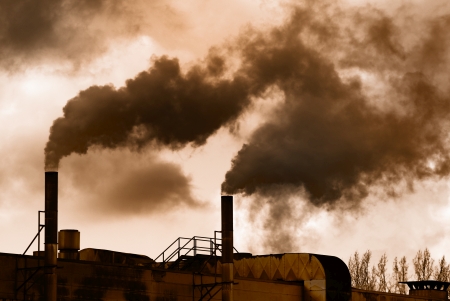‘The Times They Are a-Changin’’
—Bob Dylan
Today, we’re going to take a break from our normal programming to discuss something much more big-picture.
Life.
Specifically, how life has changed…through not one, but three industrial revolutions…and how a fourth is on its way.
Rewind to the early 1700s. Up until this point, most people have lived very dull, very limited lives.
I’m not talking about Christopher Columbus or King Henry.
I’m referring to the 99% of the population — the peasant class. They lived on farms. They worked on farms. They survived on what the farm produced. As a luxury, they might trade for something that the farm next door produced.
There was little village-to-village trade happening at this level. Certainly not much of country-to-country.
Basically, you lived off the land and what your family could wrangle out of it. But in the late 1700s, that started to change with the dawn of…
The First Industrial Revolution — 1770
In this first industrial revolution, we see the emergence of steam, coal, and steel…along with several important inventions related to them.
We see John Kay’s flying shuttle come about. In one fell swoop, Kay doubled the output of textile weavers…production shot through the roof.
This sparked an incredible period of growth, starting in Britain.
Then, with the emergence of steam power, coal mines became much more productive…as steam-powered devices pumped water from submerged mineshafts.
Then with greater access to coal, iron smelting became far more efficient and cheaper.
And with inexpensive metal, British industry saw a wave of new tools and machinery.
Perhaps, most importantly, the feasibility of railways. Now high-quality railroads could be constructed from the inexpensive iron, widening the radius in which miners, farmers and travellers could effectively reach.
You can see how this chain of innovations created an upward spiral — with each innovation making the previous ones more accessible and less expensive.
It ushered in a new era of machines…and triggered the beginning of the end for agricultural societies in Europe.
But the next chapter would flourish across the Atlantic, in the colonies of the New World…
Second Industrial Revolution – 1870
Around 1870, a British inventor named Sir Henry Bessemer came up with a new furnace that could convert molten pig iron into steel in large quantities.
Steel offered much more than iron could. Strength. Durability. Corrosion resistance. Weldable. Non-toxic quality. Heat resistance.
With the advent of readily available steel, machines and tools could be developed for relatively little money, but with HUGE impacts on production.
High production and big machines gave way for this era’s most important advancement — factories. Suddenly, you weren’t dependent on your neighbourhood blacksmith to hammer up some nails for your fence. Instead, you had a factory making thousands of nails per hour, with high-quality alloys…and that meant lower prices and more jobs.
From this, we got the automotive industry, petroleum, electrification, hydroelectric power, replaceable parts, and further mechanisation.
Remember, only two centuries before, most people tilled farmland by hand for their entire lives.
Now they were riding about in cars or locomotives, working in factories, with electricity. Even planes were invented during this period.
And that’s generally where society stayed, through the Great Depression and both World Wars, until…
Third Industrial Revolution – 1970
This period of human innovation was marked by the tsunami of electronics it created.
Through electronics, we got transistors, microprocessors, computers, advanced telecommunications, space research, biotechnology, robots, and the internet.
And while the previous revolutions helped our society become effective, the third revolution really helped guide us to a trajectory of efficiency.
We didn’t need a team of accountants with calculators to do what one computer could. We didn’t need filing rooms to store what one hard drive could.
Phones. TVs. Transportation. Communication. All becoming automated, more efficient, more reliable, and more accessible.
It’s where we are today — in the age of electronics.
But not for much longer…
Because while the first three revolutions occurred a century apart from one another, the coming fourth revolution will cut that in half.
And by most accounts, it’s already begun…
Fourth Industrial Revolution – 2020
The looming Fourth Industrial Revolution stands to come to fruition mere months from now.
And what it will do will be truly remarkable.
It will be marked by two key innovations: digitalisation and automation.
Together, they might create a new standard of living that will not only drive up productivity but should alleviate scarcity across markets.
In other words, time, food, natural resources, money — all could become readily available…and without much effort on mankind’s part.
It could mean the end of poverty as we know it.
The end of tedious tasks.
The end of most manual jobs.
And the birth of the era of leisure and creativity.
To get there, we expect to see a series of new innovations that already exist come into mainstream favour.
And like the upward spiral of steam-power, coal, and iron…we should see an upward spiral for these new innovations…each one playing off the others.
And it will likely happen FAST.
Consider this: if the difference between the second and third was 100 years, then the third and fourth revolutions is just 50 years, then we could be looking at the fifth revolution by just 2045.
Which means the Fourth Revolution could be fully formed in just a couple of decades.
The exponential growth of innovation will be stunning.
That’s why I’ve written a brand-new report on exactly how I see this new trend playing out…and how savvy investors can profit from it.
What’s more, one of the best-placed companies to capitalise on this trend is just around the corner in Wellington.
I’ve put all of the relevant details in my report, which should be finalised this afternoon.
I’m thrilled to have uncovered this huge opportunity, and I’m eager to share my findings with you.
Best,
Taylor Kee
Editor, Money Morning New Zealand
